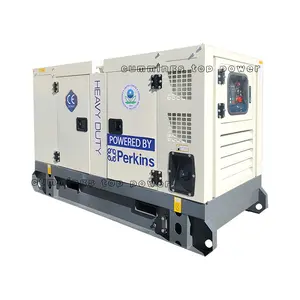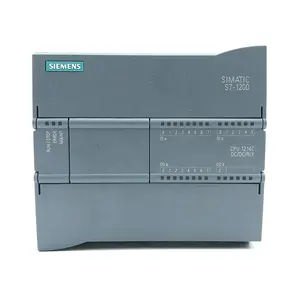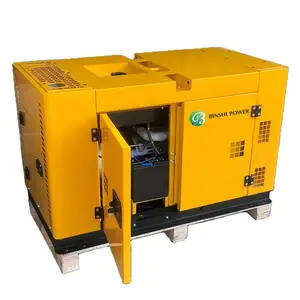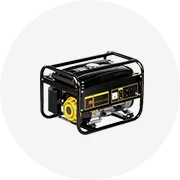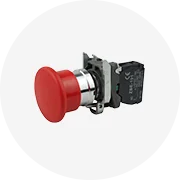Phổ biến trong ngành của bạn

Màn Hình Cảm Ứng Hmi 7 Inch Công Nghiệp Chống Nước Hiệu Suất Cao Điều Khiển Công Nghiệp HMI Giảm Giá Mạnh
27,77 US$ - 40,99 US$
Đơn hàng tối thiểu: 1 Bộ


Bảng điều khiển cảm ứng HMI 6av7674-1la31-0aa0 6av7674-1la32-0aa0 6av7674-1la33-0aa0
10,00 US$ - 100,00 US$
Đơn hàng tối thiểu: 5 Cái


HMI Kinco gl100e gl070 GL07 gl07e mt4434t HMI 4.3inch 15inch Kinco PLC giao diện người máy Kinco gl043 gl043e HMI
Sẵn sàng vận chuyển
79,00 US$ - 89,00 US$
Đơn hàng tối thiểu: 5 Cái
Vận chuyển mỗi chiếc: 5,93 US$


Bảng điều khiển màn hình cảm ứng HMI 6av7674-1mb00-0aa0 6av7674-1mc00-0aa0 6av7674-1md00-0aa0
10,00 US$ - 100,00 US$
Đơn hàng tối thiểu: 5 Cái


Kho tại chỗ nóng bán New Original panelview cộng với thiết bị đầu cuối Giao diện hiển thị PLC mô-đun HMI 2711p-b10c4d8
100,00 US$ - 999,00 US$
Đơn hàng tối thiểu: 1 Cái

Giá tốt HMI 6av2123-2mb03-0ax0 6AV2123-2GA03-0AX0 PLC HMI màn hình cảm ứng mới ban đầu trong kho
121,00 US$ - 233,00 US$
Đơn hàng tối thiểu: 1 Hộp

GT1672-VNBA 100% gốc Mitsubishi HMI got1000 loạt 10 inch HMI màn hình cảm ứng
483,00 US$ - 520,00 US$
Đơn hàng tối thiểu: 1 Bộ
Vận chuyển mỗi chiếc: 20,73 US$

Cảm Biến Rơ Le PLC Mới Và Nguyên Bản Hoặc SW-212 Bảng HMI SW-211 SW-111
200,00 US$ - 280,00 US$
Đơn hàng tối thiểu: 1 Cái

Bảng điều khiển hoạt động công nghiệp gốc HMI màn hình cảm ứng màng bảo vệ DOP-B03S210/211
3,00 US$ - 10,00 US$
Đơn hàng tối thiểu: 5 Cái

Mới Nhật Bản ban đầu thương hiệu SW-111 211 212 chuyển đổi cảm biến SW-111/211 212 EX-22A uex22a sunx cảm biến EX-22A 28A PN
60,00 US$
Đơn hàng tối thiểu: 1 Cái

Good Price New Original Other Electrical Equipment PLC Module Driver Inverter HMI Display DME4000-211
186,00 US$ - 358,00 US$
Đơn hàng tối thiểu: 1 Cái

Giá tốt HMI 6av2123-2ma03-0ax0 6av2123-2gb03-0ax0 PLC HMI màn hình cảm ứng mới ban đầu trong kho
121,00 US$ - 233,00 US$
Đơn hàng tối thiểu: 1 Hộp

Factory Sealed Packaging Brand New Original PLC Inverter Drive HMI ERC 211 080G3263
269,00 US$ - 689,00 US$
Đơn hàng tối thiểu: 1 Cái

New Original HMI Bảng điều chỉnh LCD hiển thị màn hình cảm ứng NT631C-ST153-EV3 HMI Touch Panel trong kho
635,00 US$ - 650,00 US$
Đơn hàng tối thiểu: 1 Bộ
Vận chuyển mỗi chiếc: 24,26 US$

6es7272-0aa30-0ya1 TD200 hiển thị/Hiển thị PLC HMI màn hình cảm ứng mới ban đầu trong kho
23,00 US$ - 44,00 US$
Đơn hàng tối thiểu: 5 Cái
Vận chuyển mỗi chiếc: 4,78 US$

High Quality Brand New Original PLC Module Inverter Driver HMI ERC 211 080G3263
269,00 US$ - 689,00 US$
Đơn hàng tối thiểu: 1 Cái

2020 Chính Hãng Mới Bán Buôn Cummins Điều Khiển Động Cơ Assy Điều Khiển Đơn Vị 0300-6014 Cho HMI 211
735,00 US$ - 746,00 US$
Đơn hàng tối thiểu: 1 Cái

Ban đầu cho Cummins Phụ tùng Điện Chất lượng cao genset điều khiển HMI 211
Sẵn sàng vận chuyển
300,00 US$ - 700,00 US$
Đơn hàng tối thiểu: 1 Cái
Vận chuyển mỗi chiếc: 36,54 US$

Tất cả trong một điều khiển điện tử ban đầu màn hình cảm ứng bảng điều khiển điện lệnh HMI 211 một phần số: 0300-6014
555,75 US$
Đơn hàng tối thiểu: 5 Cái

Hệ Thống Pos Đa Năng 10 Inch 12 Inch Core J4125 Thắng 10 Màn Hình Cảm Ứng Pos Ma Hmi Máy Tính Để Bàn
316,61 US$ - 529,15 US$
Đơn hàng tối thiểu: 1 Đơn vị
Vận chuyển mỗi chiếc: 45,00 US$


New Original HMI Bảng điều chỉnh LCD hiển thị màn hình cảm ứng DOP-B03S210/211 DOP-B03E211 DOP-B04S211
30,00 US$ - 40,00 US$
Đơn hàng tối thiểu: 1 Cái

Máy Tính 15 17 Inch Máy Pos Chắc Chắn Không Quạt Tất Cả Trong Một Mặt Trước Io Bảng Điều Khiển Công Nghiệp Màn Hình Cảm Ứng Máy Tính Với Pin
Sẵn sàng vận chuyển
395,00 US$ - 678,00 US$
Đơn hàng tối thiểu: 1 Đơn vị
Vận chuyển mỗi chiếc: 55,00 US$

Mô Đun Chuyển Tiếp Hoặc Công Tắc PLC Mới Và Nguyên Bản 6211C-211-PP-121D
300,00 US$ - 320,00 US$
Đơn hàng tối thiểu: 1 Cái

new and original PLC relay or switch module K10-211 K10-221
5,00 US$ - 8,00 US$
Đơn hàng tối thiểu: 1 Cái

Mới và độc đáo PLC Relay hoặc chuyển đổi mô-đun DC3500-CE-OA20-211-00000-00-0
300,00 US$ - 380,00 US$
Đơn hàng tối thiểu: 1 Cái

Mới Và Gốc PLC Relay Hoặc Switch Module HDA4770-A-250-211
1.200,00 US$ - 1.300,00 US$
Đơn hàng tối thiểu: 1 Cái

new and original PLC relay or switch module K12-211 K12-221 K12-231
5,00 US$ - 8,00 US$
Đơn hàng tối thiểu: 1 Cái

Ban đầu mới và niêm phong Mô-đun đầu vào PLC HC-KFS13K
10,00 US$ - 15,00 US$
Đơn hàng tối thiểu: 5 Cái
Vận chuyển mỗi chiếc: 10,22 US$

Mô-đun mới và niêm phong PLC 211-0aa23-0xb0
10,00 US$ - 15,00 US$
Đơn hàng tối thiểu: 1 Cái
Vận chuyển mỗi chiếc: 22,56 US$

Original New Micro logic điều khiển 6es7 211-0ba23-0xb8
10,00 US$ - 15,00 US$
Đơn hàng tối thiểu: 1 Cái
Vận chuyển mỗi chiếc: 22,56 US$

Nhật Bản ban đầu Thương hiệu Mới chuyển đổi quang điện cảm biến CZ-171A CZ-172A CZ-172B CZ-171B-P SW-211 SW-212 SW-111 chuyển đổi
60,00 US$
Đơn hàng tối thiểu: 1 Cái

Van Nạp Động Cơ Tùy Chỉnh Của Thương Hiệu Khác Nhau Cho Mercedes-Benz Cho BMW Cho Audi Cho LR Cho Vw Cho Toyota Cho Kia Vv
30,00 US$ - 80,00 US$
Đơn hàng tối thiểu: 1 Bộ

Mới Và Gốc Gốc PLC s7-1200 CPU 1211C 6es7 211-1be40-0xb0
1.300,00 US$ - 1.400,00 US$
Đơn hàng tối thiểu: 5 Đơn vị

New Original PLC mô-đun mô-đun điện 6es7 211-0aa23-0xb0 mô-đun
230,00 US$ - 276,00 US$
Đơn hàng tối thiểu: 1 Cái

New Original PLC mô-đun điện mô-đun 6es7 211-0ba23-0xb0 mô-đun
230,00 US$ - 276,00 US$
Đơn hàng tối thiểu: 1 Cái

New Original PLC mô-đun mô-đun điện 6es7 902-3ag00-0aa0 mô-đun
230,00 US$ - 276,00 US$
Đơn hàng tối thiểu: 1 Cái

GT1675M-STBA bán buôn Mitsubishi màn hình cảm ứng ban đầu 10.4 inch giao diện người-máy
248,00 US$ - 300,00 US$
Đơn hàng tối thiểu: 1 Bộ
Vận chuyển mỗi chiếc: 20,73 US$
Các danh mục hàng đầu
Giới thiệu về hmi 211
Alibaba.com cung cấp các sản phẩm 39 hmi 211. Có rất nhiều hmi 211 lựa chọn dành cho bạn, chẳng hạn như công nghiệp, tự động, và tự động hóa công nghiệp. Bạn cũng có thể chọn từ thép hmi 211.

